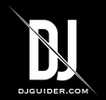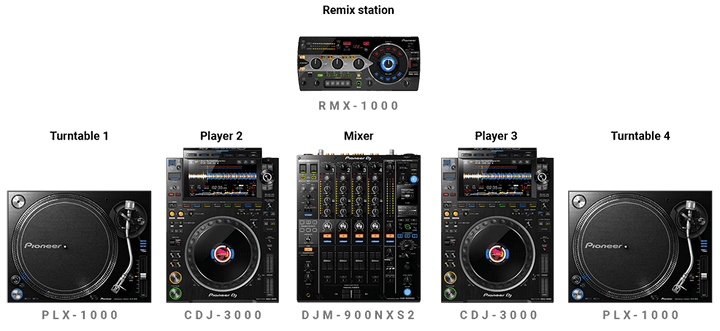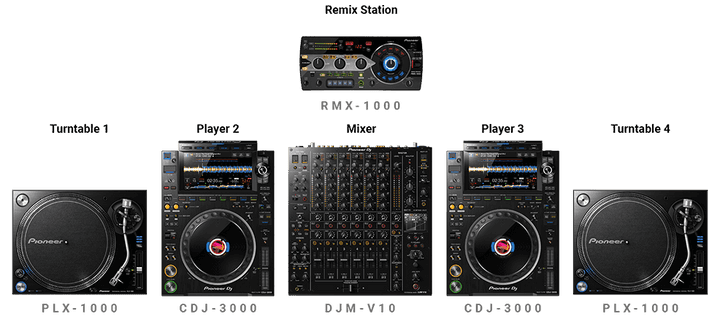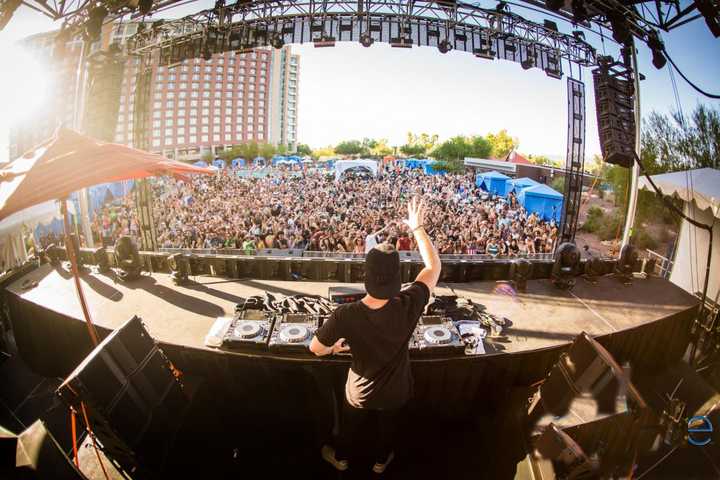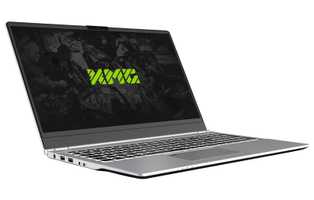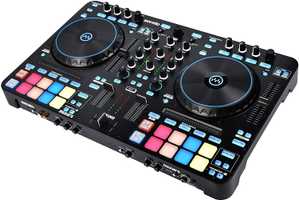Why do festival DJs need 4 CDJs?
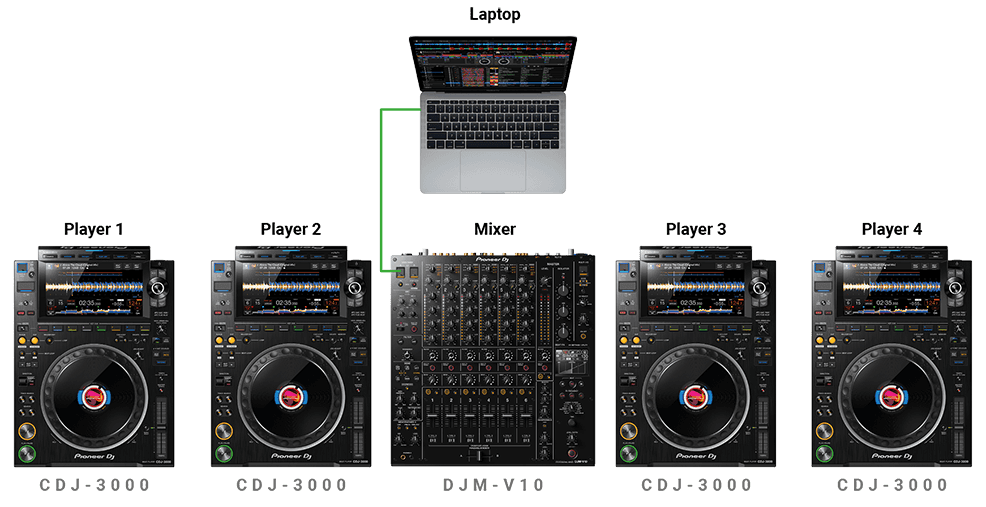
In most clubs, lounges, and bars the standard DJ setup in most DJ booths usually consists of a mixer two decks whether they’re CDJ’s or turntables, and a laptop or in some cases a DJ controller and a laptop.
We see a standard complement of three or four CDJ’s and a DJ mixer with no laptop insight on most music festival stages. When you listen to many of these artists on festival stages most of how they perform can be basically done on two CDJ’s.
What is a CDJ?
A CDJ is a specialized digital music player used by DJs.
CDJ can play digital music from CD’s, USB flash drives, or memory cards.
Why do DJ’s need 4 CDJ’s?
Dj’s need 4 CDJ because they can easily mix baselines mids and highs of 2 songs to fit them perfectly. You can mix the baseline of the first song with the highs of the second song.
Why does DJ have 4 CDJ’s?
DJs have 4 CDJ’s because they can control 4 tracks at the same time within the DJ software.
How many CDJ’s do you need?
You need at least 2 CDJ’s plugged into a mixer.
Can you DJ with just one CDJ?
Yes, you can, this ability to play from just one CDJ is used in case of equipment failure.
I know a couple of artists get pretty tricky when they’re playing on four decks. dropping acapella doing live blends they like to combine and rearrange song elements together, but this isn’t the case with the majority of electronic music artists and much of the way they play can be done using a controller and all-in-one system or a two-deck set up with a laptop.
On the festival stage what are the real reasons for having three four or more CDJs?
Despite all the rumors that we hear perpetuated by DJs on the internet, I’ve done an in-depth analysis of festival performances and I’ve been able to turn some of these techniques into lessons.
Along with the instructors that I work for, we’ve done mixed deconstructions of Skrillex, Diplo and others, which means many of them are doing real mixing.
My point being while pre-recorded sets do sometimes happen they’re not as often as they’re blown up to be. Remember when Cruella played at ultra and everyone accused them of playing a fake set because the RCA wires weren’t connected to the CDJ’s.
Very few people understood that they were using HID mode. In fact, I’m pretty sure many DJs still don’t know what HID mode is.
Today we’re gonna answer the question why do festival DJ’s need four CDJ’s?
In the following list of reasons, we’re not going to be including the musically performative reasons to use three-four or more CDJ’s. I think that one is obvious when people see folks like James Hype rocking on all four decks.
This list is to explain why festival setups and some electronic music concerts utilize three or four decks despite the performer only needing two at a time.
Redundancy and Modularity
Because of the high-profile nature of the festival stage especially when it’s being filmed broadcasted and streamed mistakes cannot be made during a set. Even if the artist is only playing on two of those CDJ’s. They have an additional two CDJ’s as backup.
They’re there just in case the primary two give you any trouble. A fun side note is that the CDJ 3000 can be linked up to six units together and paired with a six-channel mixer like the Pioneer DJM-V10 6 Channel DJ Mixer.
Picture this, if you’re using a controller and that one controller fails your set is compromised or it’s done. In a two-deck setup, you only have your two decks if one deck fails you better have a pre-recorded set ready to go.
Of course, for DJ software users who use Rekordbox Serato Tractor or Virtual DJ while using laptops, you could always go into one deck instant doubles. It’s an emergency tactic where you can control both decks by using one physical deck.
If your computer fails the redundancy of having multiple decks beyond two, especially when you have a perfect symmetrical four, helps manage the risks by providing backup to any unlikely but possible issues. Rather than all the music depending on one single laptop source and two critical decks or one controller or all in one system. It spreads your functional DJ gear and music source out.
Environment
What kind of environment is a festival stage-like. Unlike laptops especially intel based MacBooks stand-alone gear like CDJ’s and I guess also all-in-one systems are designed to operate at higher ambient temperatures. Typically anything over 95 degrees Fahrenheit or 35 degrees celsius.
A laptop used for DJ-ing will begin to thermal throttle resulting in glitching noises audio dropouts performance lag and often spontaneous shutdowns to prevent the computer from frying itself.
Not every laptop is like an XMJ DJ 15 that was tested in the desert at temperatures up to 105 degrees Fahrenheit or 40 degrees celsius. The CDJ 3000 is rated to be able to operate at up to 150 degrees Fahrenheit and that’s 66 degrees celsius.
That’s much hotter than what most people would want to be dancing and jumping around in. But that tolerance is way above where most laptops can operate in.
On top of that while modular DJ gear is not exactly water-resistant or waterproof. They can take a little bit of a sprinkle here and there without the catastrophic failure of the device itself. And since most festivals are outside the risk of this happening is a reality every production team has to face and manage.
Could you imagine what would happen to a MacBook if it just got a little bit of a sprinkle from a light drizzle?
Along with that with some festivals happening in the desert dust and sand is just as great a risk as rain. If these particles make their way into the intake vents of your laptop they can either cause your laptop to overheat prematurely or worse damage the internal components or cause a short circuit rendering the laptop to be useless.
Dust and dirt particles won’t stop a CDJ from functioning. Newer CDJ’s like the CDJ 3000 are built to be resistant to dust under particles. That means that despite getting a little bit of dust sand and dirt on the CDJ’s your jog wheel will still function smoothly.
The additional CDJ’s aren’t always used for music
There’s an Armin Van Buren video out there where he was explaining how he uses the outside two decks. What he had was a time code signal inside each of those decks and he uses it to control visuals on the giant display that goes with the music.
The visual control is coordinated by the engineer at the front of the house. It’s there so that he can control graphics images and animations that are on the led walls.
The idea was in order for the graphics to sync up to the tempo of the music Armin had to manually set it using the CDJ because there’s no way that the engineer can guess what tempo the song is placed at. My guess is it’s also a great way to sync the pyro and other visual effects.
Today CDJ’s and DJM’s can be configured to sync with software like show control. You can use that to sync the visuals but also if an artist is going too loud or is just driving it into distortion, the engineer in front of the house can turn him back down because they have all control of the DJ gear.
Sound quality
This reason is not so much to explain why you use four at all but is more of an explanation of why you use CDJ’s at all versus using a controller. In a club borrowed lounge you can get away with those minor nuances in sound quality that for the most part don’t really matter.
If music is playing all night at the club you don’t really hear the noise floor when the music is shut off because you’re continuously playing music all night.
But on a large concert level sound system it becomes very apparent. If you’ve ever been to a music festival there are long moments where the gear is set up but there’s no music playing. The mixer and everything plugged into it better not have an audible noise floor.
The signal-to-noise ratio better is good. Also at louder volumes, bad sound quality can be way more fatiguing to listeners than good sound quality.
At higher volumes, lack of clarity and distortion is magnified. Modular DJ gear is built for that level of performance. The Pioneer DJM-900NXS2 mixer along with the flagship CDJs was designed for loud volume playback. In fact, there is even a series called the tour one that takes further steps to improve sound quality along with durability in festival environments.
Today the CDJ 3000 does real-time upscaling of the sample rate through a process of interpolation to further improve the clarity of the music playback. It’s a lot like the technology that allows you to take a 1080p video and upscale it to 4k while retaining some of the sharpness. That’s what interpolation is.
There’s no DJ software in the market that can match the level of the sound quality of individual CDJ’s especially the CDJ-3000s along with a higher quality mixer. This is because of the upscale sample rate the low noise and the time stretch algorithm of the key lock also known as master tempo.
The reason is that unlike CDJ’s that are dedicated to specific functions a laptop computer has multiple tasks to manage. A CDJ only needs to be a CDJ. If you ever get a chance to play on the CDJ 3000s try this out: If you play standalone where you put the flash drive on it’s doing the upscaling, you can hear the difference versus when you use it in HID mode using Rekordbox and performance mode.
Let me say that again there’s a difference in the sound quality when you play on the CDJ’s stand-alone versus when you use a laptop. It’s furthermore apparent when you’re comparing moderate to extreme tempo settings when the master tempo is engaged.
If you want the best of both worlds of the laptop and the sound quality you can use Rekordbox’s link export mode. It basically links your computer with the CDJ’s the same way a flash drive would and the hardware upscaling still happens at the CDJ level. You can choose songs on your laptop but the playback engine still happens on the CDJ hardware. It’s a really great way to build your sets using the hardware that you’re going to use.
Legacy
Having more than two decks has always been around since the early days of dance music. If you look at old photos of Larry Lavonne at the old paradise garage back in the late 70s. You would often find three or more turntables and a wide 19-inch rotary DJ mixer. Mind you these big wide rotary mixers are capable of taking up to six turntables.
I remind you this was back in the 1970s. Configuration wise the turntables would be up top and the mixer would sit closer to you just around waist height and it’ll be at an angle. This was a popular configuration at dance music venues with permanently installed gear for many decades. It started during the disco era and can be seen in photos into the 2000s at clubs like the Ministry of sound in the UK.
The reason behind the multiple turntables is simple, unlike digital DJ gear today you can instantly preview and queue up songs. In a vast library, it takes way more time to do that when you’re pulling out real vinyl. While DJs could fit more songs onto compact discs it still took time to search and load.
In fact, some electronic music artists like Armin Van Buren would burn only one song per cd to avoid sifting through the CD booklet in what today equates to Serato’s face. Prior to the release of the CDJ 2000, it made sense to have multiple decks to be able to queue up multiple songs.
Many older DJs came from the early house and even the early disco era multiple decks were the norm.
So where did the two deck and the mixer thing come from?
The two-deck and mixer setup was embraced by early hip-hop DJs. It was a turntable mixer turntable. This made sense if you were back spinning scratching or juggling the records. It also helped you be more mobile. The mixers that the hip-hop heads used were quite different from the ones installed at the discotic.
Unlike the wide six-channel rotary mixers early hip-hop DJs opted for the smaller mixers that brought the turntables closer together with slider volume controls for each one of the channels including a horizontal control slider known as the crossfader.
Today what we see on a festival stage is actually a fusion and an evolution of what started from those two different worlds.
In terms of setup, it’s a side-by-side setup using a mixer with a crossfader like the early hip-hop heads preferred with three or more decks like the disco era DJs. While each individual Dj artist performer has their own personal preferences the four-deck setup is approachable by most DJs.
If you only prefer to play on two decks you’re set. If you want to play on four decks you’re still set. If you want to cue up multiple tracks on each deck you can do that. If you want to scratch using the crossfader you can do that as well. Heck if you really wanted you can even add a laptop to the mix and still be able to use all that gear and you can use any DJ software you want.
I’ve seen Diplo play on Serato before and Skrillex used to be a Tractor user. I hope this post clarified for you the reason why festival DJs have a four CDJ setup.
